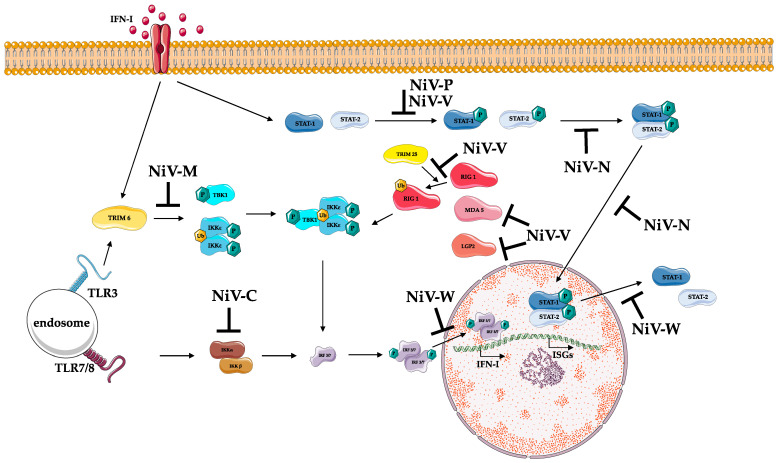Figure 3.
Schematic representation of NiV innate immune modulation in humans. NiV uses several immune modulation mechanisms to alter type I interferon (IFN-I) production and signaling. TLR and RLR detection of NiV RNA leads to IFN-I and IFN-stimulated gene (ISG) activation; however, several NiV proteins interfere in this process at different levels: NiV-V can prevent RIG-I, MDA5, and LGP2 stimulation. Conjointly with NiV P, NiV-V can also prevent STAT phosphorylation. NiV-N can inhibit STAT dimerization and also its nuclear importation. In addition, NiV-W prevents STAT1 and STAT2 nuclear exportation. NiV-M induces the degradation of TRIM6, thus preventing IKKε ubiquitination (Ub), oligomerization, and phosphorylation (P). NiV-C inhibits IKKα/β dimerization, necessary to activate IRF3 and IRF7, and in the same pathway, NiV-W protein inhibits nuclear transport of phosphorylated IRF3/7 dimers. Altogether, these mechanisms prevent the expression of IFN-I and ISG genes.

